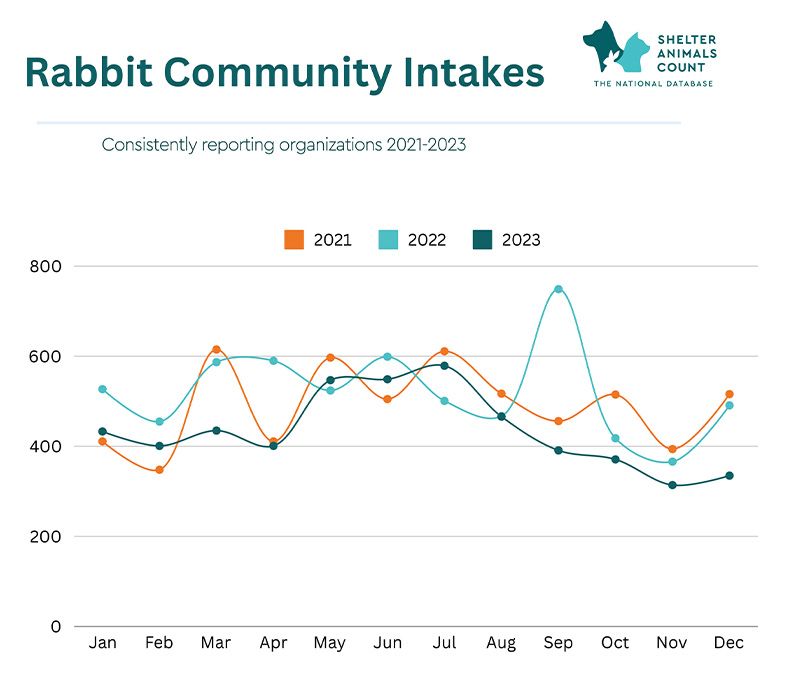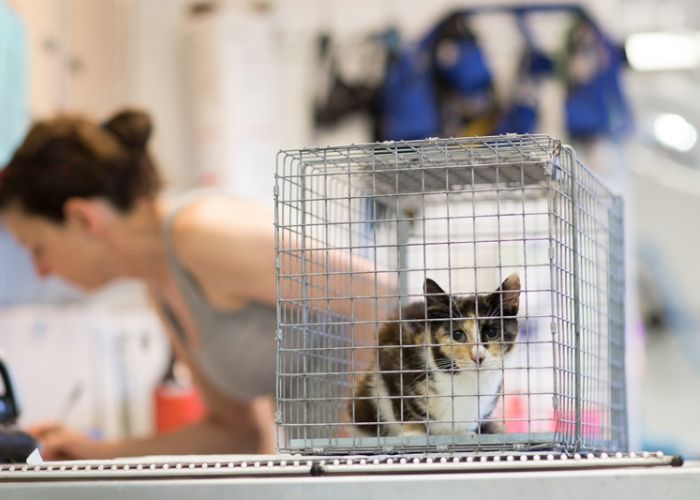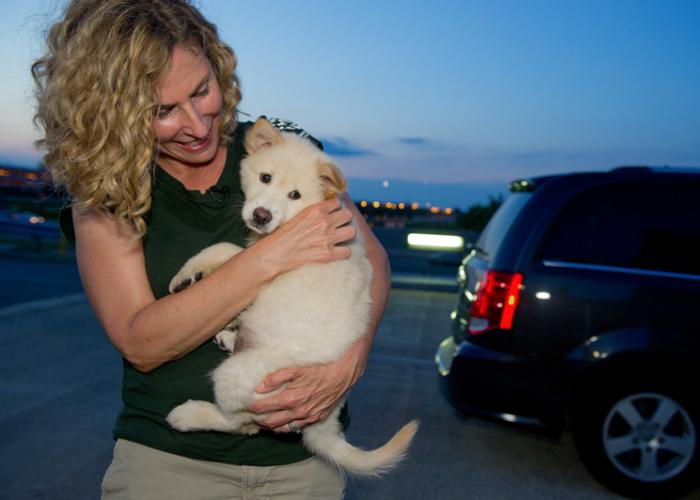Fact check: Does Easter cause a surge in unwanted pet rabbits?
What the evidence says about ‘Easter bunny’ surrenders

Our fact-checking series examines common beliefs, often spread by the media, related to the animal sheltering field. Learn how we check facts and find more articles in this series.
Background: Every spring, posts on social media warn about “Easter bunny” adoptions. The underlying message is that people who adopt a rabbit at this time will return or abandon their pet once the novelty wears off.
What the data reveals: To date, only one scientific study has analyzed the population of shelter rabbits in the U.S. In 2012, researchers analyzed six years of rabbit records at four shelters in Massachusetts and Rhode Island. The most common reasons for relinquishment were “inability to care/lack of interest” and “housing issues.” The researchers found a slight increase in intake in May at all four study sites, but the finding wasn’t statistically significant.
“Whether this slight increase was due to unwanted Easter rabbits being surrendered is unclear,” the authors concluded.
More recent data from Shelter Animals Count showed an increase in net rabbit intakes during spring and early summer of 2023 compared to the rest of the year. But a separate SAC analysis of 2021 data from 12 New England adoption centers showed that “rabbit intake is fairly consistent month to month and there is no obvious Easter-related spike in intake.”
As Easter is a holiday celebrated around the world, studies of shelter rabbit populations in other countries can provide further insight. A 2024 study analyzed rabbit intakes at the British Columbia SPCA in Canada over a five-year period. Researchers found that rabbit intakes were the highest in May followed by March and October. Most rabbit intakes came from owner surrenders, with “owner life-related” and “housing” being the most common reasons for relinquishment.
On the possible connection between Easter and rabbit relinquishments, the authors concluded: “Our results partially support the anecdotal belief that rabbit intakes increase in the spring following Easter, as May was the month with the highest number of rabbit intakes. A further analysis into the high rabbit intake for May, considering both intake source and age, revealed a noticeable influx of rabbits sourced by humane officers and adolescent rabbits. A plausible explanation is that owners might release unwanted rabbits outside post-Easter, leading humane officers to intervene and collect these animals.”

However, in the UK, a 2017 study analyzing data from two shelters found that rabbit intakes were the highest at one location in April and at the other in January. The most common reason given for relinquishment was “too many rabbits/unplanned litters,” suggesting that a lack of knowledge and spay/neuter resources plays an important role in rabbit relinquishments.
A 2018 study in the UK looked at online classified ads posted by people seeking to rehome their rabbits between 2014 and 2016. The researchers found seasonal trends: The highest number of rabbits listed for sale online were posted in the summer while the highest number of rabbits listed for free were posted in the winter. Rabbits advertised in summer were significantly younger than rabbits advertised in winter.
“The trend in the number of advertisements for rabbits for sale appeared to reflect seasonal variation in rabbit reproduction, with the greatest number of advertisements posted in the summer reflecting that most rabbits are born in spring,” the researchers stated.
Looking at the issue from another angle, a 2016 study called into question whether the Easter holiday is a significant motivation for people acquiring pet rabbits. In a survey of 2,890 pet rabbit enthusiasts around the world, researchers found that the most common reasons people acquired a rabbit were for companionship (32%), the desire to give a rescue/shelter rabbit a home (29%) and to bond with an existing rabbit (25%). Few respondents chose a reason that could be connected to Easter.
Rogue “statistics” related to Easter rabbit adoptions regularly appear in articles and social media posts. They include claims such as “four out of five rabbits bought as pets near Easter are abandoned or die within a year” and “up to 95% of Easter bunnies given as gifts die before they’re a year old.” Neither claim appears to be based on a scientific study.
The “four out of five” statistic is often attributed to a 2017 National Geographic article (in which it doesn’t appear). In that article, while some of the rabbit rescue groups interviewed reported a spike in rabbit surrenders during the weeks and months following Easter, the author states that “it’s unclear how many rabbits are abandoned in the U.S.—and how many are Easter bunnies.”

Conclusions: One limitation in examining this sheltering belief is the scarce research on small animals in shelters, especially in the U.S. More research is needed on the number of small animals coming into shelters and the reasons people acquire and relinquish them.
In the meantime, what lessons can we take from the existing research?
There’s anecdotal evidence that some rescues and shelters see an increase in rabbit relinquishments in the weeks following Easter, but there’s not enough evidence to support the belief that this is a widescale problem across the country. Even with evidence of rabbit intakes increasing in some areas around spring and early summer, we can’t definitively say that a desire for “Easter bunnies” is causing this trend.
Most experts agree that halting rabbit adoptions around Easter isn’t a solution. Instead, shelter and rescue staff should have open, nonjudgmental conversations with people interested in acquiring a rabbit, no matter the time of year. Rabbits require special care and, despite their reputation as a child’s “starter pet,” can be more skittish and require more patience than the average child expects. By making families aware of these details and setting appropriate expectations, shelters and rescues can increase the number of successful adoptions and avoid driving people to pet stores.
The animal welfare field also needs to find ways to expand affordable, accessible spay/neuter services for rabbits. The 2012 study of shelter rabbit populations in Massachusetts and Rhode Island found that 81% of rabbits were unaltered when they were brought to the shelters.
Increasing training opportunities for community and shelter veterinarians to learn how to safely spay and neuter rabbits can help reduce overpopulation in the same way it has for cats and dogs. Spaying and neutering may also alleviate many of the behavioral issues that drive people to surrender pet rabbits. Lastly, resources that enable pet owners and shelter professionals to properly sex rabbits can help prevent accidental litters.
Reviewed by Samantha Hill, Shelter Animals Count; Dr. Emily McCobb, Center for Animals and Public Policy at Tufts University.






